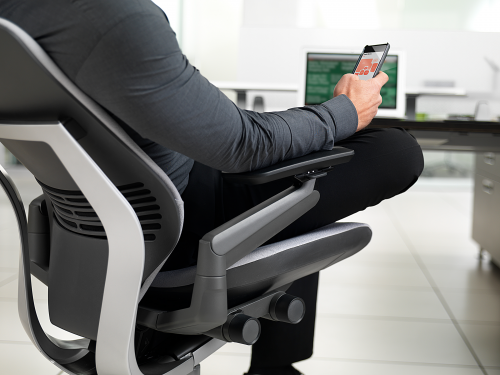
Revolutions in office technology produce revolutions in office furniture design. The typing pool gave way to the cube farm which in turn gave way to open “team” table. The Aeron chair famously became the symbol of Silicon Valley in the dot com boom.
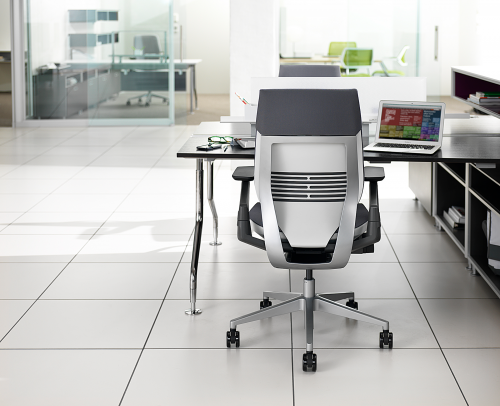
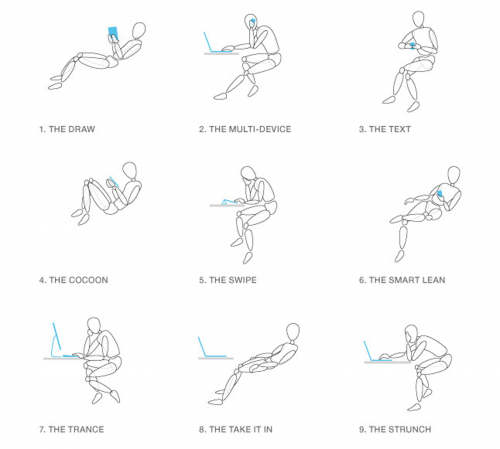
Now the rise of mobile phones and pads as dominant work tools has inspired Steelcase to reinvent the office chair. Based on what Steelcase design chief James Ludwig said were surveys of the habits of 2000 people in eleven countries around the world, the company will offer the Gesture chair beginning this fall. It will be shown at Neocon in June.
Steelcase looked at what Ludwig called the new environment of the office, where people work and sit more casually. The researchers talking to workers defined nine distinct new postures, such as the “swipe.” These postures conditioned the design of the new chair, with such innovations as arms that move up and down easily. The back and seat move more flexibly together; the chair, Steelcase says, encourages people to move around every so often.
[ steelcase ]
<a href=" about phil patton
about phil patton
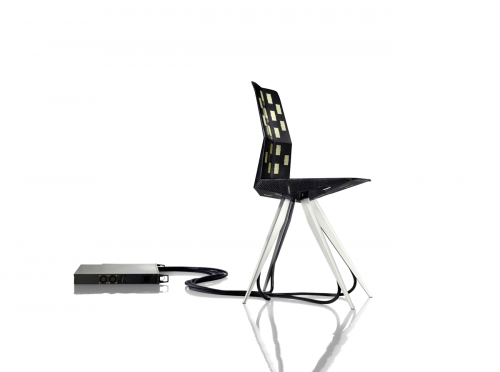 click > enlarge
click > enlarge
R18 Ultra Chair Public Beta designed by Clemens Weisshaar and Reed Kram for Audi. For their groundbreaking new venture, the designers are developing a chair within a public testing environment at the Salone del Mobile Milan 2012 in collaboration with Audi’s Lightweight Design Centre using methods borrowed from the future of automotive manufacturing.
The R18 Ultra Chair consists of three main components: a carbon composite seat, a carbon-rubber composite back rest and aluminium alloy legs which can be compacted and transported in a lightweight flat-pack box.
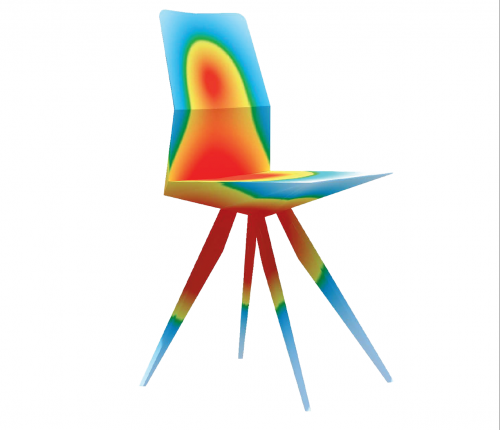
The chair incorporates crowd-sourced data acquired through thousands of testing sessions using advanced industrial sensors whose data is processed by custom algorithms to adjust the final geometry and construction of the end product accordingly.
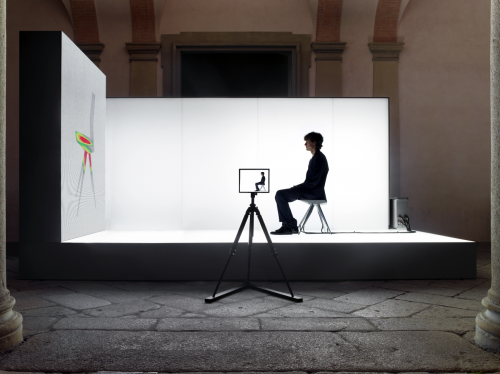
Visitors to the installation are invited to use the chair and view their unique physical impact on it displayed via a video wall inside the testing booth. Hundreds of industrial sensors integrated into the prototype capture every movement and simultaneously display it as a realtime false color force simulation, thus exposing and visualizing the flow of forces normally hidden from the human eye. The purpose of this live laboratory is to gather user data in order to optimize the final product and shed every gram of excess weight.
Every testing session will be documented as a personalized video and sent back to each visitor by email link to watch and share with friends. After the public beta phase, all crowd-sourced data will be fed into the chair’s design parameters and its production adapted as necessary. Above> Barbara is donating her body to science – well Audi really.
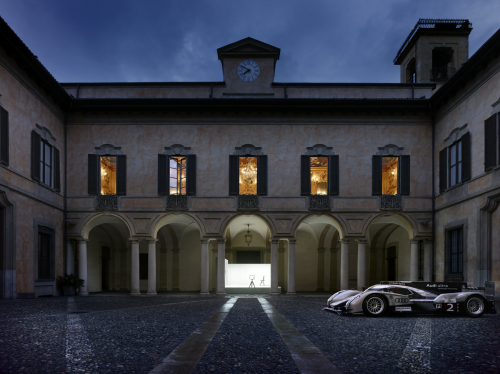
The installation took place in the courtyard of the 18th Century Palazzo Clerici, Milan from April 17 to 22, 2012 during the 51st Salone Internazionale del Mobile. The final product will be presented to the public in December 2012 at Design Miami. Above> r!8 photos and palazzo clerici by tom vack.
The chair’s namesake is the 24 Hours of Le Mans winning Audi R18 race car. Audi has dominated Le Mans with its cutting edge technology for the past decade and won 10 races since 2000. As part of the installation the Le Mans 2011 winning Audi R18 will be exhibited alongside the public beta testing lab. The carbon fibre monocoque chassis with an Audi TDI 3.7 litre V6 engine and total weight of only 900kg (1980 lbs) represents the ultimate in lightweight construction.
[ palazzo clerici ] [ tom vack ] [ audi r18 tdi ultra ]


 about phil patton
about phil patton






